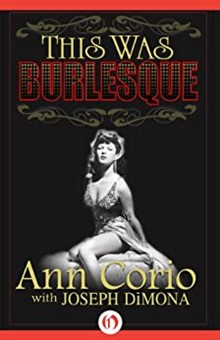 Kyle Hustedt is the Artistic Director of The Cabaret Project and a member of CCP. Hailing from Odebolt, Iowa, he is a graduate of Luther College with a degree in Opera and Master of Music from Northwestern. Originally performing on cruise ships, he found his voice and his home in the cabarets of Chicago. He was part owner in The Monocle in St. Louis and served as the entertainment director. Kyle was lucky enough to be cast in a music video style Super Bowl commercial alongside Jennifer Hudson. He is a founding member of Feathered Beaus and has led workshops on burlesque and cabaret.
Kyle Hustedt is the Artistic Director of The Cabaret Project and a member of CCP. Hailing from Odebolt, Iowa, he is a graduate of Luther College with a degree in Opera and Master of Music from Northwestern. Originally performing on cruise ships, he found his voice and his home in the cabarets of Chicago. He was part owner in The Monocle in St. Louis and served as the entertainment director. Kyle was lucky enough to be cast in a music video style Super Bowl commercial alongside Jennifer Hudson. He is a founding member of Feathered Beaus and has led workshops on burlesque and cabaret.
Burlesque, by definition, is a literary, dramatic or musical work intended to cause laughter by caricaturing the manner or spirit of serious works, or by ludicrous treatment of their subjects. But is burlesque cabaret? How is our genre of art and performance, our playground of imagination, defined both then and now? To understand how the cabaret singer can benefit from the growing popularity of burlesque we must first understand how we arrived here.
The singer’s cabaret is rooted in a tradition that began in France in the late 1800s. It was here that the artists of the day would gather socially in the cafés of Paris to present ideas and new works and so began the oral traditions of the café concert, which was mostly spoken satire reflecting the current milieu or social environment. It was current, present, risqué and free of censorship. Are we, in our current approach, archaic? Are we participating in a living museum by presenting stories and songs in a format that has diverged from our roots?
Personally, I left opera because I did not view it as a “living” artform. I had experienced cabaret and caught the “bug,” as so many of us have, by attending shows at Voltaire in Boystown. It was here that I felt alive and awakened. What made that experience so alive? The witty banter of Amy Armstrong was perhaps the catalyst of that living, emotional connection. If we are to examine why we can understand that, beyond the song, she is a natural comedienne who brings current, relatable dialogue to the table that everyone can latch on to and have a laugh at because we all have had the experience-at-hand and therefore, “got” the joke. The “gimmick” as we call it, works.
 Looking at the words of Lisa Appignanesi on defining the seemingly unstoppable phenomenon of cabaret: “Wherever it went it brought with itself that contagious air of freedom and daring disrespect for established structures whether political, artistic or institutional.”
Looking at the words of Lisa Appignanesi on defining the seemingly unstoppable phenomenon of cabaret: “Wherever it went it brought with itself that contagious air of freedom and daring disrespect for established structures whether political, artistic or institutional.”
The historical contagion of these cabaret environments once swept the European landscape igniting in Paris, Vienna, Berlin, Munich, Moscow and London before declining, snuffed out by martial law, censorship or dictatorship. Appignanesi goes on to draw the conclusion that if one were seeking a “Cabaret experience” today one would get that by attending a comedy show. So, do we have to be funny? If we aren’t inherently funny, what do we do?
There is a formula to this equation that the iconic Chicago venue, Mister Kelly’s, came upon and implemented from 1959 until it closed in 1975 where singers were paired with a comedy act and this made a symbiotic, dynamic and relatable stage product that played host to the likes of Lenny Bruce, George Carlin, Jackie Mason and Bob Hope, alongside Eartha Kitt, Ella Fitgerald, Barbara Streisand, and Bette Midler. The singer was enhanced by the comedy (or satire) which engaged audiences by being relatable and current.
This formula can be then traced further back to Munich where musician Mark Henry of the performance troupe known as “The Eleven Executioners” (along with his wife, famed singer Marya Delvard) became “well aware” that for a cabaret to be successful it MUST have variety and the relationship between audience and performer must remain a relaxed and intimate one.
What is intimate? Small and cozy is perhaps what comes to mind for most and perhaps burlesque is inherently intimate because intimacy, as pertains to sexual foreplay in the form of the striptease, is natural and always relatable. It is undeniable that sex sells because we can all relate to that primal instinct.
 What do we think when we think of burlesque? A striptease often consisting of opera gloves, feather boas and fans wrapped in a corset, right? Wrong! We must examine burlesque with its familiar associations into its notable resurgence in popularity. It is succeeding in cultivating fresh, young fan bases that are discovering small “fringe” entertainment and loving it.
What do we think when we think of burlesque? A striptease often consisting of opera gloves, feather boas and fans wrapped in a corset, right? Wrong! We must examine burlesque with its familiar associations into its notable resurgence in popularity. It is succeeding in cultivating fresh, young fan bases that are discovering small “fringe” entertainment and loving it.
Ann Corio went deep in her publication “This Was Burlesque” stating that the root of the art (burlesque) dates back to Ancient Greece and satirical presentations such as Aristophanes’ “Lysistrata” began the tradition. By this lineage we all stemmed from this root and can be equated as branches of the same artistic family tree. Corio asserts that burlesque is a legitimate branch of show business, albeit the lowest branch, but, that’s the limb nearest the people.
Fast forward centuries to New York City in 1869 where an undetected British invasion took place in the form of burlesque. Lydia Thompson crossed the pond and made a splash with her British Blondes. The acceptance that ladies could be in tights and on stage was groundbreaking as far as morality and risqué boundary were concerned. In those days, lady players of burlesque were presented in plays and farces that were satirical and sexually themed — not the burlesque of today. This was a time where women were forbidden to reveal anything other than the ankle and so dances, such as the Can-Can, were born. It was this subtle suggestion of risqué behavior that enamored audiences and kept them coming back for more. Parisian burlesque traditions followed and The Moulin Rouge, The Folies Bergère, The Lido and The Crazy Horse led the pack. Cabaret in Paris is dominated today by what is predominantly a burlesque presentation that features a variety of other acts including the singer among others.
Variety shows including Vaudeville and Minstrelsy were the likely stages for such burlesque acts in America until the focus of the female form took the mainstage in lavish affairs such as Florenz Zeigfeld’s Follies (modeled after the Folies Bergère) where the parade of risqué costumed dance acts reigned supreme. These grand revues were a far cry from the smaller houses of the general burlesque cabaret and therefore, broke with the parameter of the intimate experience essential to a traditional cabaret. Small rooms for burlesque flourished in the early 1900s and the acts were pushing boundaries with soubrettes showing off their figures while singing and dancing. This gave way to the striptease acts of the American burlesque tradition by the 1930s and like their singer counterparts, both enlisted comedy acts in striking similarity keeping the traditional presence of satire ringing through audiences.
This, in turn, gave way to the Musical Parody which was often risqué, and presentations of popular music or operas reworked to be satirical or comical were popular in London and New York during the 1800s. If a singer was looking to be current and relatable to younger audiences, the consideration might be to pepper in popular music of the day, reworked in style or lyric, as their “burlesque.” The audience could then find common ground with the entertainer as we have entered familiar and common territory.
The American burlesque style as we know it today was driven to obscurity by the 1970s however, a resurgence began in the 1990’s where young dancers began presenting the art again and cultivating a strong cult following in nightclub settings. This revival swept both sides of the Atlantic whereby a community of artists formed alliances and a professional network navigated easily by presenting either traditional, comedic or satiric expressions revolving around the art of the “tease.” This work is generally set to popular and familiar music of the day that a younger audience member has an ability to naturally relate to.
The adage of something old being new again has never been so embraced in rapid upward growth as the American burlesque tradition. In 2010 the publication “21st Century Burlesque” came on-line (Burlesque Magazine ⋆ 21st Century Burlesque Magazine) and sparked a ranking award system for the artists in the field. Article content, product advertisement, “it” entertainers, trends and networking are the crux of the burlesque community at large. Examining the acts of professionals in the burlesque field, we see polished nuances of movement that are dance centric and body positive. The attraction to the art is commonality in that sexually suggestive subject matter is, at the end of the day, relatable.
If the singer were looking to “spice up” their act it might lead to basic and literal nods to conventional burlesque utilizing props such as gloves or boas on stage. What is the intention behind wanting to add such a thing to a singer’s presentation and is there an attraction to the element because the audience just “gets it”? There absolutely IS an attraction to do this because it bridges a gap between audience and entertainer where the audience does get it. Often the uncomfortable fumble of props unfamiliar to the singer is part of the naughty, voyeuristic attraction by both parties to such notions as “sex” on stage being relatable.
Beyond borrowing a handful of novelty props from today’s burlesque community, there are a few trends and practices that are to be encouraged even more.
“In our modern, liberal, expressive industry, the wave of breaking taboo/political correctness can be a wonderful playground when approached with intelligence and respect.”
It seems the desire to get back to the root of breaking boundaries through satire, the burlesque of it as it were, is evident from both sides of the fence. Why is there a fence in the first place – aren’t we all derivative of the same tradition?
I recently watched a Netflix documentary titled “The Creative Brain.” The presentation touched on the creative process and how it relates to various innovations. It was here I was struck with a veritable “ah-ha” moment that strengthens my philosophy on nightlife entertainment as it pertains to spontaneity by changing the style to evolve and stay current, as with jazz, for instance:
“Jazz is a reflection of the time. The tradition of Jazz is that it always changes. If you stop changing it, if it stops growing, now you’re not following the tradition but, if you keep adding to it, it keeps changing and the people that were doing it in the last decade are saying ‘you can’t do this’ then you’re doing it right.”
It seems we are all descendants of a not-so-different lineage engaging in a forum of expression where those who gather to participate, both entertainer and audience, enter a social contract to see and be seen through active participation in and of the moment. As for the expression of satire that is so prevalent in commonality of each style of cabaret, I say be relatable and give them something to talk about and then you will find your voice and your audience.
−by Kyle Hustedt





